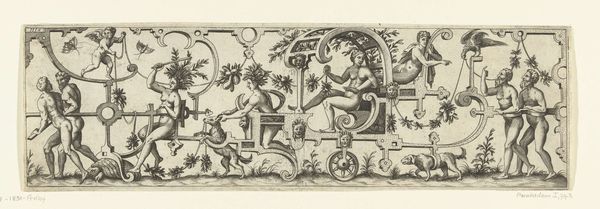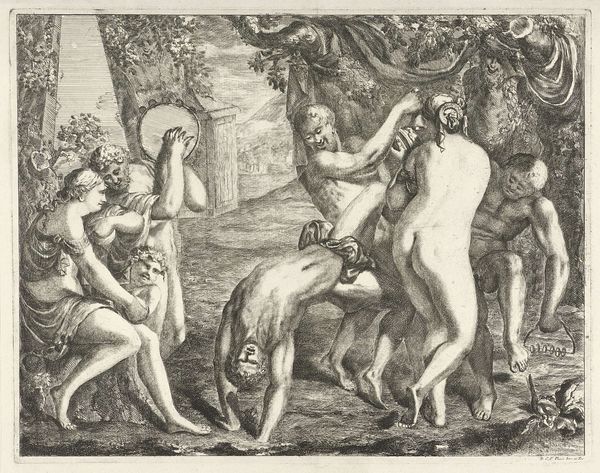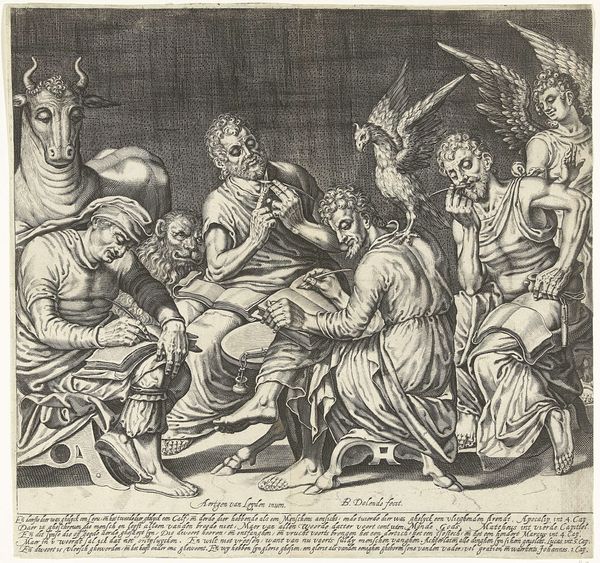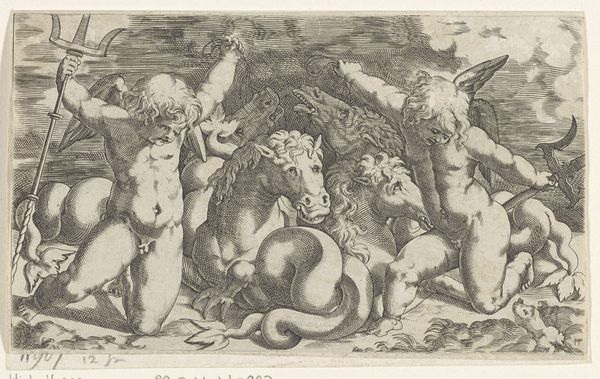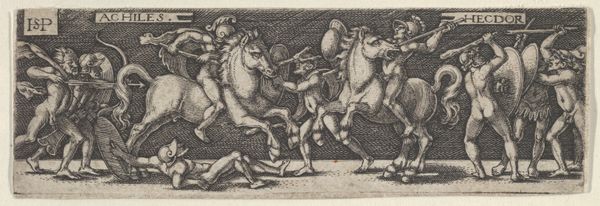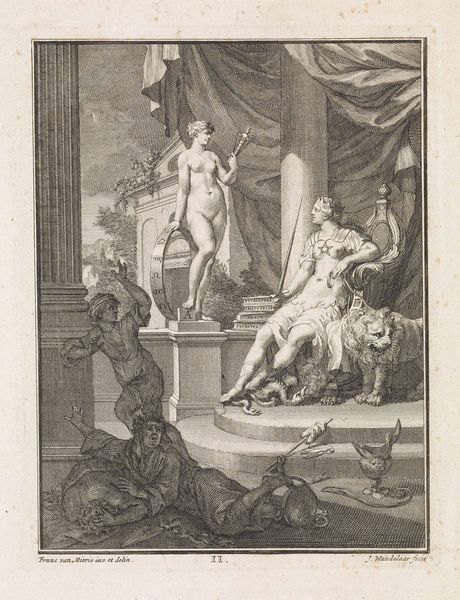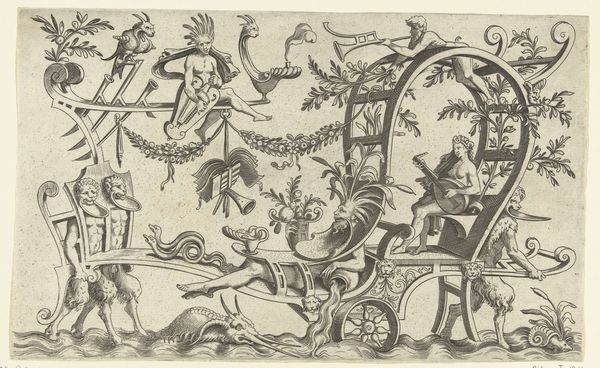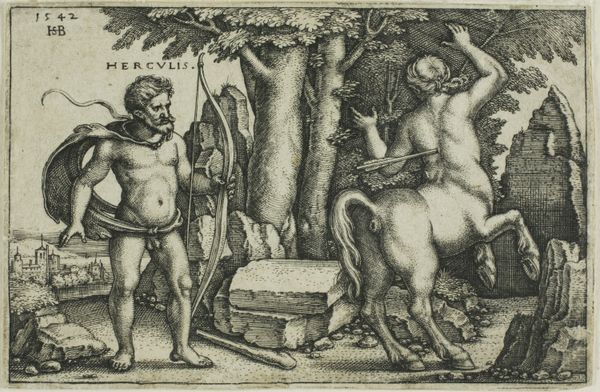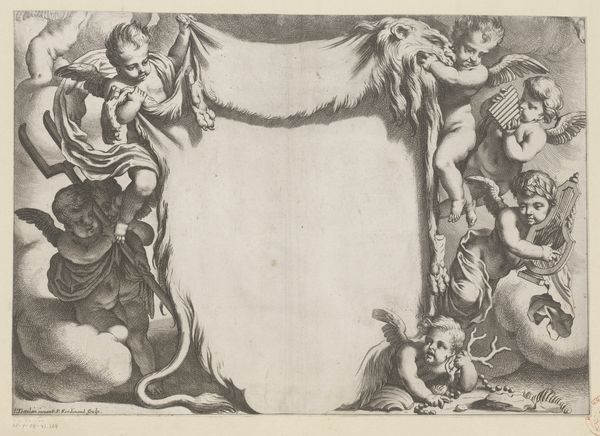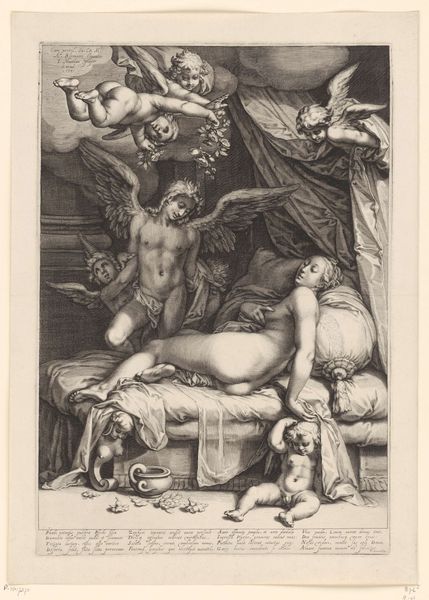
Licht gebogen fries, aan elk uiteinde een vaas op een sokkel 1516 - 1556
0:00
0:00
drawing, print, engraving
#
drawing
# print
#
figuration
#
11_renaissance
#
history-painting
#
engraving
Dimensions: height 61 mm, width 225 mm
Copyright: Rijks Museum: Open Domain
Curator: This engraving, "Light Curved Frieze, with a Vase on a Base at Each End," dates from sometime between 1516 and 1556. It’s an anonymous work currently held at the Rijksmuseum. It’s hard to get a feel for it just from an image, but it seems to represent figures of power, perhaps from antiquity, set amongst landscapes. What’s your initial read of this print? Editor: It seems to be celebrating opulence, maybe power… like a carefully designed facade. What draws my attention is the almost mass-produced nature of these prints—what can we discern about the era and culture it originated from? Curator: Exactly. These prints functioned within a network of exchange. Think about the materials involved: the paper itself, the ink, the metal plate used for the engraving. Each element speaks to specific industries and trade routes. It suggests a growing market for reproducible images, reflecting perhaps a wider accessibility of artistic ideas beyond the elite. Who was commissioning and consuming such images, and how did their modes of distribution influence artistic styles? Editor: So you're less focused on what's *depicted* in the image, and more on what it *is* and how it got here? Like, how the physical process of creation reveals social conditions. Curator: Precisely. The labor involved is equally interesting. What kind of workshop produced this? Was it a collaborative effort? Consider the engraver's skill, their training. And then think about the final destination, how was the print received and consumed? Did it serve as inspiration for other artworks, or architectural details? Editor: That's a perspective shift for me. I hadn’t considered the distribution aspect and its relation to style previously. Curator: The materiality isn't separate from the message; it fundamentally shapes how the message is communicated and received. Even the choice of printmaking over painting affects how it was used! Editor: I now realize that paying closer attention to the methods and resources required to produce art can significantly increase my grasp of its historical relevance.
Comments
No comments
Be the first to comment and join the conversation on the ultimate creative platform.


